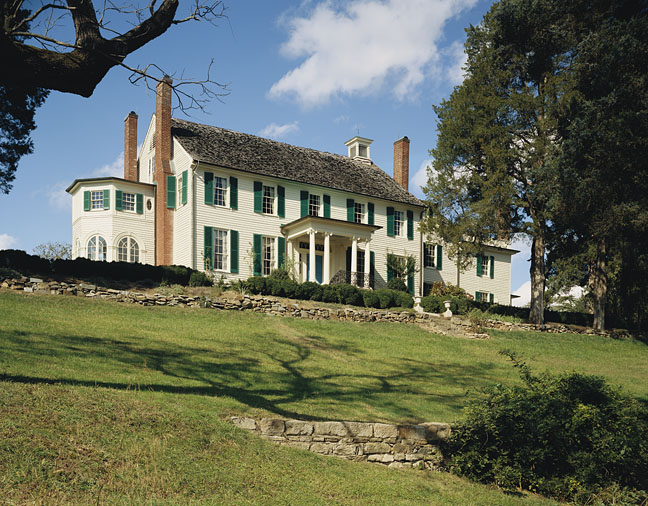Julius Garibaldi “Gari” Melchers (1860-1932) was an American artist whose technique ranged from realism to impressionism, and whose advocacy of the arts contributed to development of major art museums in the United States.

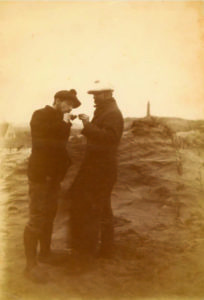
Early Years
Like most aspiring American artists of his generation, Melchers acquired a solid academic foundation in Europe that served him well as a figure painter and portraitist. In 1877 he enrolled in the Royal Academy of Art in Dusseldorf to study figure painting. The conservative curriculum emphasized well-modeled form, hard-edged realism, and the finish of the old masters. It espoused old-fashioned subject matter such as history and biblical painting, peasant portraits and scenes of everyday life, all of which would serve to form Melchers’ developing artistic vision.
In 1881, Melchers continued his training in Paris at the Ecole de Beaux-Arts and the Académie Julian, where he encountered emerging stylistic trends that would contribute to his meteoric rise as a leader of American expatriate painting. Three years later, he joined another American expatriate, George Hitchcock (1850-1913), at Egmond-aan-Zee, Holland. There the two artists built reputations as chroniclers of the Dutch working class, immersing themselves in the culture for the next two decades in order to ensure that their subjects were the genuine article.
The Sermon
It was at Egmond that Melchers produced his landmark painting, The Sermon, in 1886. It earned him an Honorable Mention that year at the Paris Salon, an honor unprecedented for an American. His honest characterization of Dutch pietism reflected the artistic credo Melchers nailed over the door to his studio, “Waar en Klaar” (Dutch for “true and clear”). Other notable works followed in the wake of The Sermon; The Pilots (1887), The Communion (1888), and The Choirmaster (1891) garnered him an international audience, especially in America and Germany.
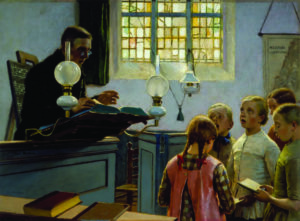
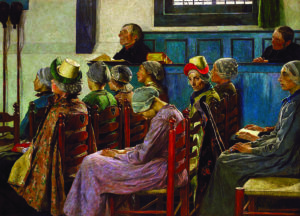
American Master
At the pinnacle of his career, Melchers occupied studios in Paris, Holland and New York; was represented in museums at home and abroad; and was a critical and commercial success. He was exceptionally versatile in his subject matter, being associated with Dutch peasant life, portraiture, the mother and child theme, landscapes, the nude, still life, and mural painting. His stylistic approach was equally eclectic, ranging from the academic realism of his early years to symbolism and the impressionism that typified his late works. Surprisingly, for a time, he slipped from prominence as his painting fell out of step with prevailing tastes. Today, thanks to the power and clarity of his art, he is being recognized once again as an American master and a leading representative of the rich flowering of painting in the United States around 1900.
Belmont
After spending many years abroad, Gari Melchers and his wife, Corinne (1880-1955) settled at the late 18th century Belmont estate in Falmouth in 1916. Many of his works from these later years depict the people and places Melchers encountered in Stafford County and the surrounding region, including the people of Falmouth.
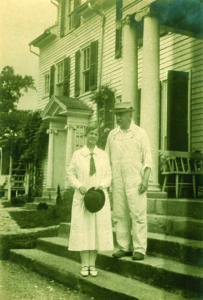
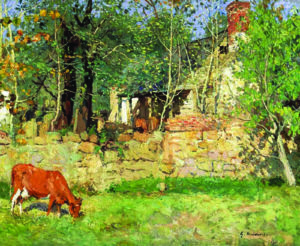
Today, Gari Melchers Home and Studio, a National Historic Landmark administered by the University of Mary Washington, contains the world’s largest collection of the artist’s works. The historic house, gardens, and grounds, as well as a 1924 studio and adjacent galleries, are complemented by over 20 wooded acres with walking trails. The site is a cultural and natural resource for both travelers and local residents.
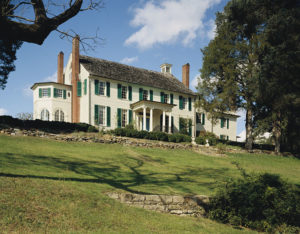
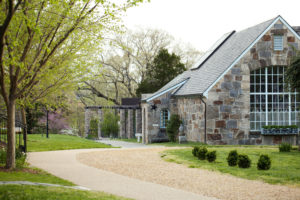
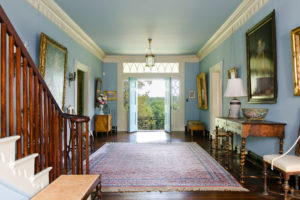
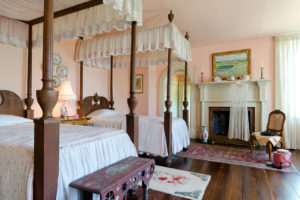
Gari Melchers Home and Studio is also home to Stafford County’s Tourism Visitor Center. To plan your trip to Gari Melchers Home and Studio, visit www.GariMelchers.org.

